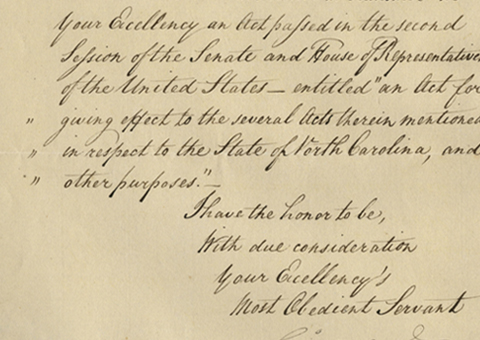Richard Wagner Letter, Likely to His Muse, Judith Gautier

It is from the Arturo Toscanini collection.
During his later years, including the period during which he was working on the score of Parsifal, Wagner's working environment was draped in silks and satins, in his favourite colours, and soaked in perfume. It was in these surroundings of extravagant sensuousness that the music of Parsifal, a work that apparently...
During his later years, including the period during which he was working on the score of Parsifal, Wagner's working environment was draped in silks and satins, in his favourite colours, and soaked in perfume. It was in these surroundings of extravagant sensuousness that the music of Parsifal, a work that apparently celebrates renunciation and chastity, was brought into the world. The music of Parsifal was to be at the furthest remove possible from that of the Ring, he told his wife Cosima: the music was to have the softness and shimmer of silk, like cloud-layers that keep separating and combining again. During the composition of Parsifal in 1877, many of these errands were performed by Judith Gautier the muse who inspired Wagner to create Tristan und Isolde, then the muse of Parsifal was the young and beautiful French author, Judith Gautier. Gautier was an enthusiastic Wagnerian and attended the first Bayreuth Festival in 1876. During this festival, there was apparently an emotional incident in her lodgings, when Wagner broke down and, sobbing, was comforted by Judith. There followed a passionate flame (at least on Wagner's side) that, although possibly the relationship was never consumated, was to continue to burn until it was extinguished by Cosima in February 1878.
Wagner's surviving letters to her include several in which he give instructions for the purchase of fabrics and perfumes. This is likely one of those letters, and for years was part of the personal collection of the noted conductor, Arturo Toscanini.
Autograph Letter Signed, in French, Bayreuth, December 1, 1877, to a woman identified as his "très chère amie et compagne" (very dear friend and companion) but from the content and date must be Gautier. from private collection, about a Christmas gift, the exact requirements of which Wagner specifies: “It is all done. I have admired your energies and rejoiced in your final success, although this war of music editors at the theater gets to me. I have written to the excellect Mr. Parroni to give him my congratulations on his work. I equally thank you from my heart for your friendship and promise to take advantage of your kind invitation for next year. Now a great prayer! Christmas approaches. I?am attempting to get a certain satin of a color and variety outside of the typical French fashion…I would be grateful if you were able to proceed in this. It would be a great joy with which I would like to surprise my wife. It must be exactly of the color indicated…”

Frame, Display, Preserve
Each frame is custom constructed, using only proper museum archival materials. This includes:The finest frames, tailored to match the document you have chosen. These can period style, antiqued, gilded, wood, etc. Fabric mats, including silk and satin, as well as museum mat board with hand painted bevels. Attachment of the document to the matting to ensure its protection. This "hinging" is done according to archival standards. Protective "glass," or Tru Vue Optium Acrylic glazing, which is shatter resistant, 99% UV protective, and anti-reflective. You benefit from our decades of experience in designing and creating beautiful, compelling, and protective framed historical documents.
Learn more about our Framing Services






































































































